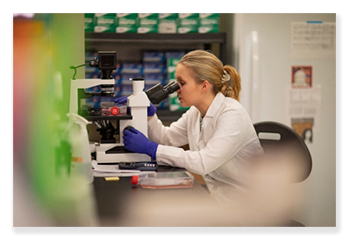Losartan in Combination with the Nanosecond Pulsed Electric Fields Cleared Orthotopic B16F10 Melanoma and Induce in situ Vaccination
Document Type
Abstract
Publication Date
3-29-2023
Category
Young Investigator
DOI
10.25776/yqjd-vc79
Conference Name
2023 Frank Reidy Research Center for Bioelectrics Retreat
Abstract
Melanoma is the most aggressive type of skin cancer with an increasing incidence and mortality worldwide. Its heterogeneity limits its response to existing therapies. In the past few decades, scientists have developed new therapies for melanoma. In many animal models, Nanopulse Stimulation (NPS) eliminates mouse and rat tumors. Additionally, NPS induces protective, vaccine effects such as in situ vaccination and immunity after ablation. However, not all tumor models respond to NPS with in situ vaccination and immunity. Mouse B16f10 melanoma model is one of them. Unlike the rat liver and mouse breast cancer models, immunosuppressive cells in B16f10 tumors were only transiently suppressed from the tumor microenvironment (TME). We hypothesize that this continued TME immunosuppression limits the potential for NSP to induce in situ vaccination and immunity.
Losartan is an angiotensin II receptor blocker commonly prescribed for hypertension. However, Losartan was recently shown to prevent the development of pro-inflammatory monocytes CD14+ CD16+, inhibit the recruitment of monocytes in canine osteosarcoma, and suppress metastasis in preclinical mouse models through blockade of CCL2-CCR2 monocyte recruitment axis. We considered that NPS of B16f10 melanoma in the presence of losartan could induce in situ vaccination by preventing the return of immunosuppressor cells to the TME.
In the absence of losartan, 500 pulses with 200 ns and 50 kV/cm eliminated 3 out of 7 tumors, but none of the 3 tumor-free mice were in situ vaccinated. In contrast, in the presence of losartan, this same condition eliminated 4 out 4 melanoma tumors and 2 of these 4 tumor-free mice were in situ vaccinated; these two mice were males while the 2 tumor-free females did not show in situ vaccination. We hypothesize that the in situ vaccination occurred due to the prevention of immunosuppressive cells from returning to the TME. These findings require further investigation.
Repository Citation
Asadipour, Kamal and Beebe, Stephen J., "Losartan in Combination with the Nanosecond Pulsed Electric Fields Cleared Orthotopic B16F10 Melanoma and Induce in situ Vaccination" (2023). 2023 Frank Reidy Research Center for Bioelectrics Retreat. 3.
https://digitalcommons.odu.edu/bioelectrics-2023retreat/3
ORCID
0000-0002-6075-9452 (Beebe)


